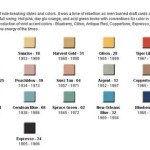What Are Standard Sizes Of Bathroom Vanities?
Bathroom vanities are crucial components of bathroom design, providing both storage and a focal point. When planning a bathroom remodel or new construction, understanding the standard sizes available for bathroom vanities is essential for optimizing space, functionality, and aesthetics. This article provides a comprehensive overview of standard bathroom vanity dimensions, exploring various widths, depths, and heights, and offering insights into factors influencing size selection.
The term "standard sizes" can be slightly misleading in the context of bathroom vanities. While manufacturers often adhere to common dimensions, slight variations are common, and custom options are readily available. However, understanding the typical ranges is crucial for planning layouts, selecting appropriate fixtures like sinks and countertops, and ensuring proper plumbing connections.
Bathroom vanities are designed to accommodate a sink, provide storage space, and conceal plumbing. The dimensions of a vanity significantly impact the overall usability and aesthetic appeal of the bathroom. Careful consideration of these dimensions is necessary to create a comfortable and functional space.
Standard Widths of Bathroom Vanities
The width of a bathroom vanity is the horizontal measurement across the front of the unit and is the dimension that offers the most variability. This is because the width largely determines the amount of storage space and the number of sinks the vanity can accommodate. Common standard widths for bathroom vanities range from 24 inches to 72 inches or more, though smaller and larger options exist.
24-Inch Vanities: These are the smallest standard size and are typically found in powder rooms or very small bathrooms. A 24-inch vanity is ideal for tight spaces where maximizing floor space is paramount. These vanities usually accommodate a single sink and provide minimal storage, often consisting of a small cabinet or open shelving.
30-Inch Vanities: A 30-inch vanity offers a slightly larger surface area and more storage compared to a 24-inch model. This size is suitable for smaller bathrooms or guest bathrooms where space is limited but a bit more storage is desired.
36-Inch Vanities: The 36-inch vanity is a popular choice for standard-sized bathrooms. It provides a good balance between storage space and footprint. This size typically accommodates a single sink but offers ample counter space and cabinet storage below.
48-Inch Vanities: A 48-inch vanity is a versatile option suitable for medium to large bathrooms. It offers substantial storage space and can accommodate a single sink with plenty of counter space or two smaller sinks. This size is frequently selected for master bathrooms or family bathrooms.
60-Inch Vanities: The 60-inch vanity is ideal for larger bathrooms where ample storage and counter space are required. It comfortably accommodates two sinks, making it a popular choice for couples sharing a bathroom. The additional width also allows for more elaborate storage configurations, such as drawers and cabinets.
72-Inch and Larger Vanities: Vanities exceeding 72 inches in width are typically found in spacious master bathrooms. These larger vanities offer generous counter space, extensive storage, and the option for two sinks with plenty of room between them. They often serve as a statement piece in the bathroom design.
It's important to note that these are merely common sizes. Manufacturers offer vanities in increments of 3 or 6 inches, so there may be options like 33-inch, 39-inch, 54-inch, or 66-inch vanities available, depending on the brand and style.
Standard Depths of Bathroom Vanities
The depth of a bathroom vanity refers to the measurement from the front to the back of the unit. Standard depths are generally more consistent than widths, aiming to allow comfortable movement in the bathroom while providing adequate space for plumbing and storage. The typical standard depth for a bathroom vanity is between 20 and 21 inches.
20-21 Inch Depth: This depth is considered the standard for most bathroom vanities. It provides sufficient space for a sink, plumbing connections, and internal storage without encroaching excessively into the bathroom’s floor space. This depth accommodates most standard sinks and allows for a comfortable reach to the faucet.
Deeper Vanities (22-24 Inches or More): Some vanities, particularly those designed for larger bathrooms or those featuring vessel sinks, may have a depth exceeding 21 inches. These deeper vanities offer more counter space behind the sink and can accommodate larger storage compartments. However, they require more floor space and may not be suitable for smaller bathrooms.
Shallow Vanities (18 Inches or Less): Shallow depth vanities are designed for very small bathrooms or powder rooms where space is extremely limited. These vanities often sacrifice storage space to minimize their footprint. They typically feature smaller sinks and may have minimal or no cabinet space below.
Consideration should be given to the depth of the vanity in relation to other bathroom fixtures and traffic patterns. A vanity that is too deep can obstruct walkways and make the bathroom feel cramped. Conversely, a vanity that is too shallow may not provide adequate counter space or storage.
Standard Heights of Bathroom Vanities
The height of a bathroom vanity significantly impacts user comfort and accessibility. Over time, standard vanity heights have evolved to better accommodate average adult heights and improve ergonomics. The historical standard height of 30-32 inches has largely been replaced by taller options. The current standard height for bathroom vanities is typically 34 to 36 inches, often referred to as "comfort height."
30-32 Inch Height: This was the traditional standard height for bathroom vanities. While still available, these shorter vanities are less common in new construction and remodeling projects due to ergonomic considerations. They may be suitable for children’s bathrooms or homes where shorter individuals are the primary users.
34-36 Inch Height (Comfort Height): The "comfort height" standard is now the most prevalent option. This height is considered more ergonomic for most adults, reducing the need to bend over excessively while using the sink. It is particularly beneficial for individuals with back problems or mobility issues. The specific height within this range (34, 35, or 36 inches) can vary depending on the manufacturer and style of the vanity.
Custom Heights: For individuals with specific needs or preferences, custom height vanities can be designed and built. This allows for optimal comfort and accessibility, especially in homes designed for aging in place or catering to individuals with disabilities. Custom heights can range from shorter options for children to taller options for individuals who prefer a higher countertop.
When determining vanity height, consider the height of the users, the style of the sink (e.g., undermount, vessel), and the overall design aesthetic of the bathroom. A vessel sink, which sits on top of the counter, will add to the overall height, so a slightly shorter vanity may be appropriate to maintain a comfortable reach to the faucet.
In addition to the overall height, it is also essential to consider the toe kick height. The toe kick is the recessed area at the bottom of the vanity that allows users to stand closer to the sink. A standard toe kick height is typically 3-4 inches.
Understanding standard bathroom vanity sizes is essential for effective bathroom design and planning. By considering the width, depth, and height options available, homeowners and designers can create a functional and aesthetically pleasing space that meets the needs of the users. While standard sizes provide a useful framework, it's important to remember that custom options are available to accommodate unique requirements and personal preferences. Careful measurement of the available space and consideration of the intended use of the vanity are crucial for selecting the appropriate size and style.
Selecting the right size requires a thorough evaluation of the bathroom's dimensions and the user's needs. Larger bathrooms can accommodate wider and deeper vanities, offering more storage and counter space. Smaller bathrooms may require compact vanities with shallow depths to maximize space. The height of the vanity should be comfortable for the primary users, with comfort height options being a popular choice for most adults. Ultimately, the goal is to choose a vanity that complements the overall bathroom design while providing optimal functionality and comfort.
When planning a bathroom renovation, it's beneficial to consult with a bathroom designer or contractor who can provide expert advice on selecting the appropriate vanity size and style. These professionals can assess the specific needs of the project and recommend solutions that maximize space, functionality, and aesthetic appeal.

What S The Standard Depth Of A Bathroom Vanity

What Is The Standard Bathroom Vanity Height Size Guide

Bathroom Vanities Buy Vanity Cabinets And Furniture

Plan Your Bathroom By The Most Suitable Dimensions Guide Engineering Discoveries Vessel Sink Vanity Floor Plans Washbasin Design
Bathroom Vanity Sizes In Optimizing Space And Style For Every Wellsons

Standard Bathroom Vanity Dimensions With Photos Upgradedhome Com

What Is The Standard Height Of A Bathroom Vanity

What Is The Standard Height Of A Bathroom Vanity 2024 Guide

American Standard Size Sanitary Ware Bathroom Sink White Wash Basin Solid Surface Washing Vanity China Art Made In Com

Pin By Tania Rejalaga On Bathroom Ideas Vanity Sizes Dimensions Modern
Related Posts







